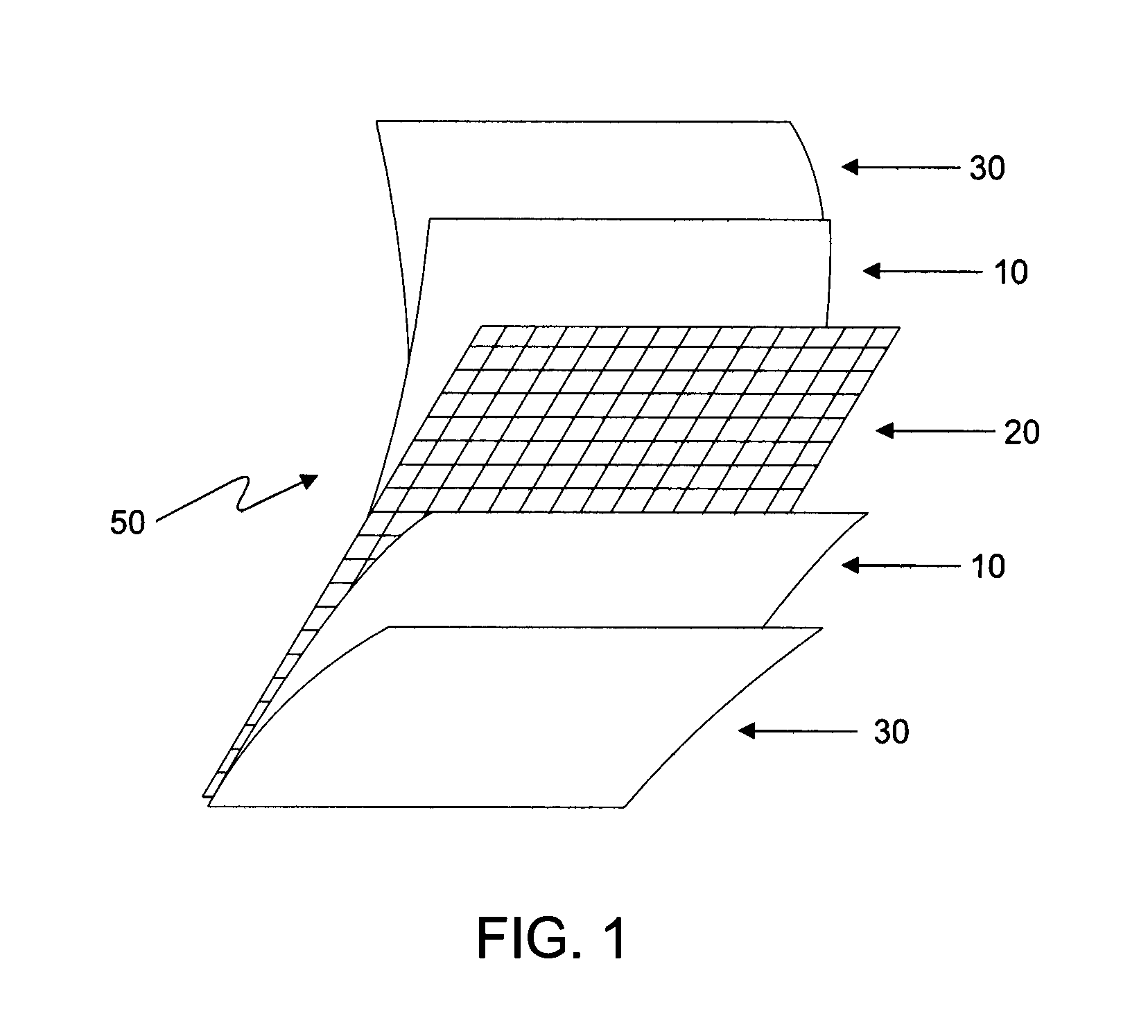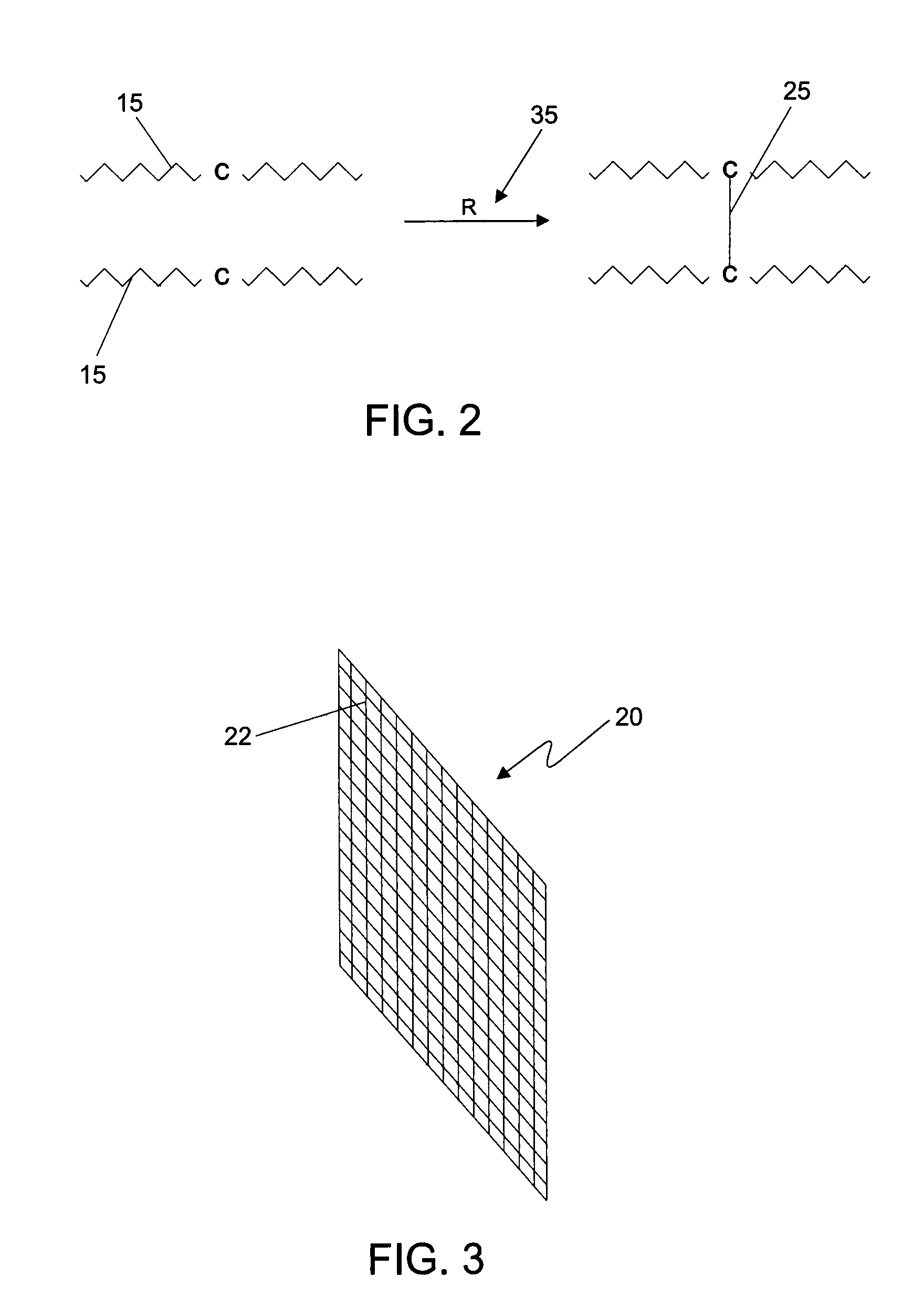Radiopaque carbon-carbon linked elastomeric materials, preparation method and uses of same
- Summary
- Abstract
- Description
- Claims
- Application Information
AI Technical Summary
Benefits of technology
Problems solved by technology
Method used
Image
Examples
example 1
Radiopaque Elastomeric Matrix Formula
[0067]
Ingredient:PHR %Natural rubber 50:00Polybutadiene 50:00Lead Oxide700:00Organic Peroxide 3:00TOTAL:803:00
External Elastomeric Layer Formula
[0068]
Ingredient:PHR %Nitrilic rubber (NBR)70:00 Neoprene30:00 Magnesium oxide4:00Stearin0.5:00 Calcium silicate30:00 DOP5:00Organic Peroxide4:00Pigment1:50
Production Method
[0069]Phase One:
[0070]In one embodiment, lead oxide is incorporated into a mixture of natural rubber and polybutadiene. The material mass, including the lead oxide and the elastomeric mixture, is sent to a calendering system including a banbury mixer and cylinder. The radiopaque substance and the elastomers are homgenyzed into a banbury (closed mixer) and then accelerated to cure without the use of sulfur in a cylinder (open mixer), where it obtains the shape of a material sheet with the desired thickness. The reinforcement layer of polyesther is directly inserted in the calendering system where it is incorporated into the radiopaque l...
PUM
| Property | Measurement | Unit |
|---|---|---|
| Fraction | aaaaa | aaaaa |
| Fraction | aaaaa | aaaaa |
| Fraction | aaaaa | aaaaa |
Abstract
Description
Claims
Application Information
 Login to View More
Login to View More - R&D
- Intellectual Property
- Life Sciences
- Materials
- Tech Scout
- Unparalleled Data Quality
- Higher Quality Content
- 60% Fewer Hallucinations
Browse by: Latest US Patents, China's latest patents, Technical Efficacy Thesaurus, Application Domain, Technology Topic, Popular Technical Reports.
© 2025 PatSnap. All rights reserved.Legal|Privacy policy|Modern Slavery Act Transparency Statement|Sitemap|About US| Contact US: help@patsnap.com



